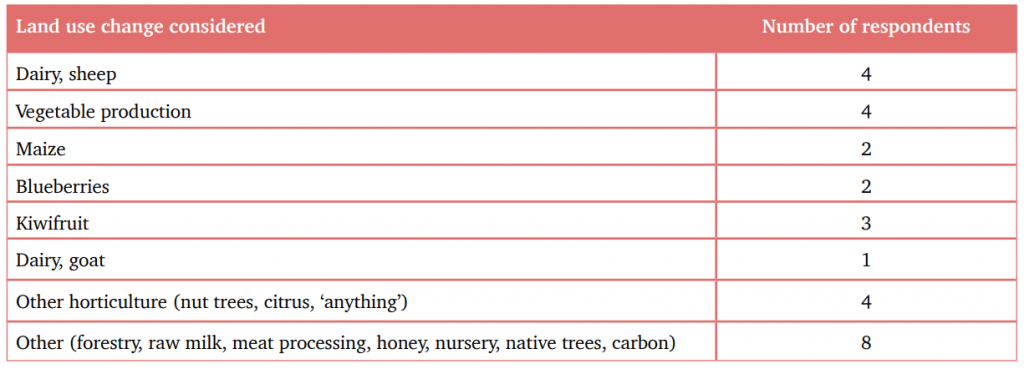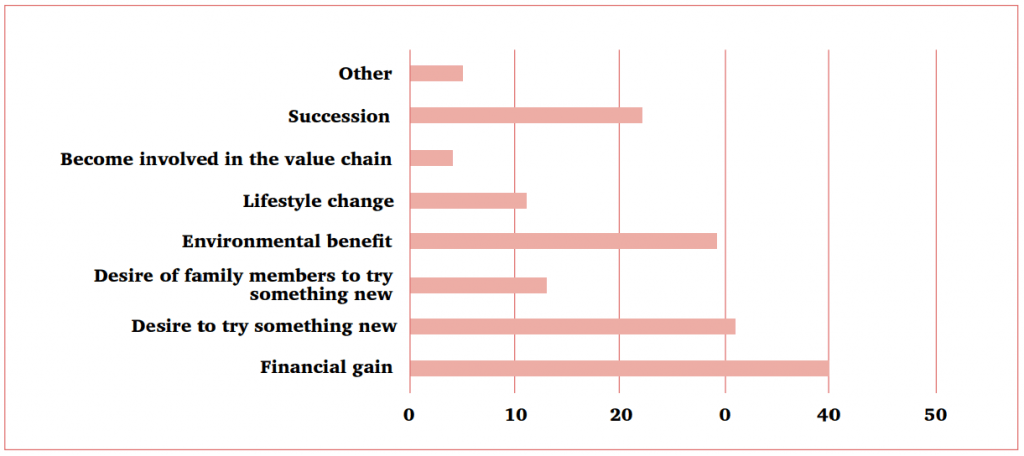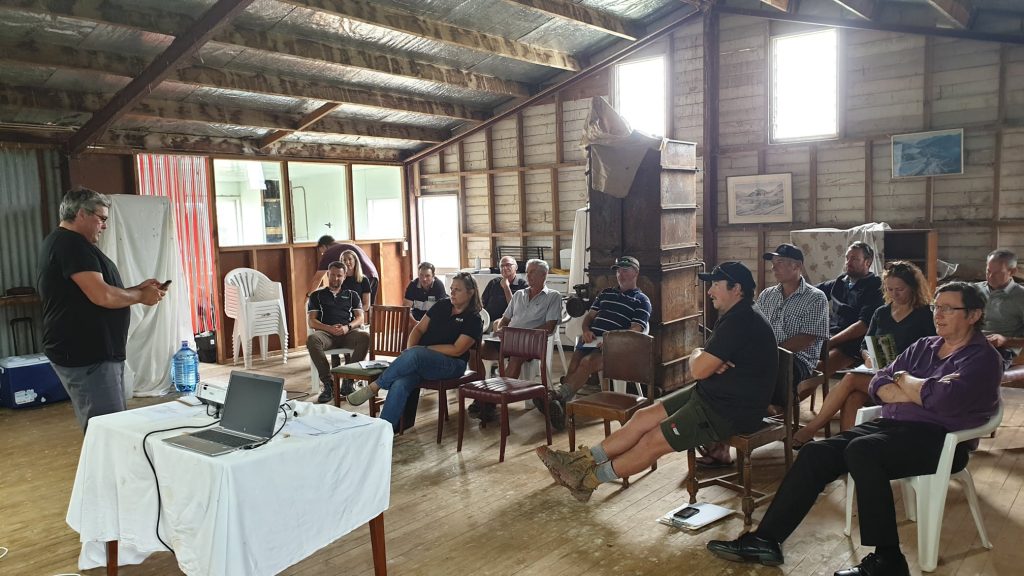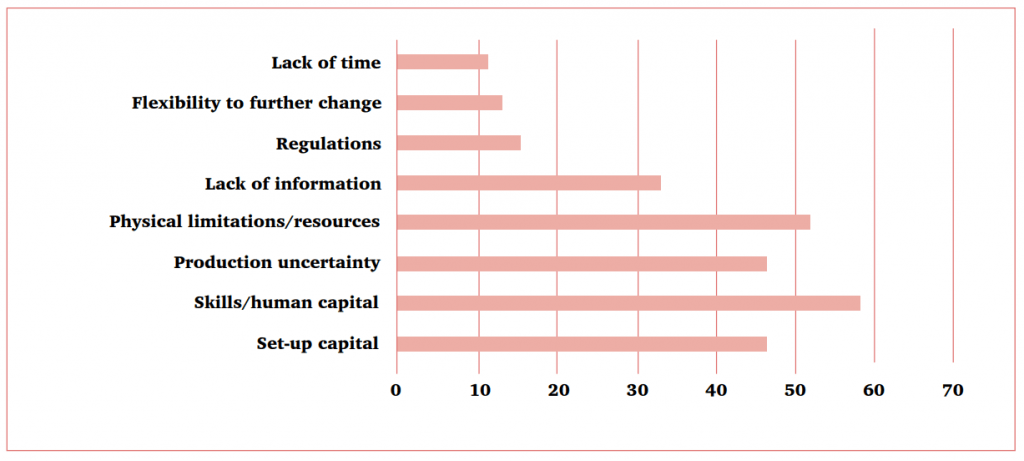Water Availability and Other Barriers to Diversification
The availability of water for irrigation and complex processes to get water use consents have been identified as key barriers to land use diversification by Waikato farmers.
Waikato sheep and beef farmer Phil Weir and his young family have a 240 ha property at Te Pahu in the Waikato. Waikato sheep and beef farmer Phil Weir and his young family have a 240 ha property at Te Pahu in the Waikato. Phil had been thinking about diversifying their operation to better provide for the next generation. For him, this decision was an equity growth issue for their children, with a 20 to 30-year development horizon to progressively convert land that might be worth $20,000 to $30,000/ha into land worth $500,000/ha.
The family’s land has long been recognised as having potential for horticulture. Phil had visited kiwifruit growers and talked to industry service providers to understand what was involved, but he had not pushed the go button.
In addition to farming full-time for the past five years, Phil Weir works part-time as a consultant with AgFirst and had worked with the Waikato Regional Council on a project exploring diversification options for the region’s farmers. As he was involved in that project he seized the opportunity to continue the work when funding became available through the Our Land and Water Rural Professionals Fund.
Clients were saying to Phil, “I’m a dairy farmer but what else can we do on my farm?” So AgFirst staff thought, why not look at what barriers farmers actually face when they are trying to look at a diversification option? Once the funding was sorted Tracy Nelson from AgResearch also became involved.
Participants and motivations
The Waikato has one of the highest proportion of highquality soils in the country and alternative land use options are becoming a very hot topic. Eleven Waikato farmers were recruited for the project, which comprised three workshops and plenty of homework.
The participants farmed a diverse range of enterprises: dairy, sheep and beef, and lifestyle. Most were considering a combination of diversification enterprises, including kiwifruit and dairy sheep, dairy sheep and blueberries, and kiwifruit and vegetable production (see Table 1).

In the workshops, the 11 farmers looked at the options available, the need for good due diligence, access to information (especially financial), and the challenges and barriers participants came up against and how they approached these.
The group of farmers were all thinking about diversification seriously, but many of them were uncertain, not knowing exactly where to start. AgFirst had already developed a due diligence list that was used as part of their consultancy, so they walked the participants through this. Another project team member, Phil Journeaux noted a few lightbulb moments when some of the farmers connected with elements on the list, but others were feeling it was all quite complicated.
Four key motivations were identified among the group (in order): financial gain, the desire to try something new, the desire to reduce their environmental footprint and the need for succession planning (see Figure 1). Generally, people wanted to get ahead financially while doing something they perceive to be better for the environment from a nutrient loss and carbon perspective, and setting up for the future.

The general age band of the group was between 30 and 50 – enough time to take on debt and hopefully to make the debt work for itself.
During the project, participants had to do their own work researching diversification options for their farms. Project leaders deliberately tried not to assist them, instead saying, “You might need to talk to this organisation or this person.” Quite a few of the farmers they were working with commented on how difficult it was from a time perspective, given they still had to run their farm and do homework to work out whether they should change their farming system.
Finding information and perseverance
Finding the information needed to inform diversification decisions proved difficult. While information about pastoral farming is easily available, outside the large horticultural industries such as kiwifruit and pipfruit, it is more difficult to access information on other horticultural crops.
“If you get into the smaller horticultural things like berries, the number of people doing it are relatively small. It is very competitive, and most people aren’t keen on sharing information,” says Phil Journeaux.
Phil says that farmers who have been dairy or sheep and beef farming for 20 years sometimes do not appreciate how well the value chain serves them with their current operation. “If I’m a dairy farmer, I produce the milk and miraculously a tanker turns up every morning and takes it away. Whereas, if I was looking at getting into some obscure horticultural product, that whole value chain simply does not exist so if I want to get into it, I have to create it.”
A farmer can grow a crop, but what happens after that? “You’ve got to process it, pack it and market it which all burns a lot of time, energy and money,” says Phil.

He advises that to see a diversification project through to the end farmers need perseverance. “Some of the barriers are certainly able to be overcome in the sense you just have to persevere and hunt around. At the end of the day, you might have to take a punt.” Harder to overcome, he believes, are regulatory barriers and access to water.
Several of the group were interested in horticulture, so the project leaders conducted a few sessions talking about water and irrigation and they very quickly found how difficult it is to get water for irrigation.
This has also been the experience of Phil Weir as he worked his way through the due diligence process and finding out the feasibility of putting part of the family farm into kiwifruit. Even though he had a background in the Resource Management Act from being a consultant, it was still not easy.
For instance, he says, “There are different takes and different types of groundwater, and certain areas are overallocated, yet you know there are water rights [given in similar circumstances] elsewhere. It’s just not a very clear or easy environment to navigate for the average farmer. The ironic thing is from a regulatory viewpoint it would be far easier for me to split my farm up into lifestyle blocks and flog them off than it would be to convert it into an orchard or something like that.”
Water issues
Phil Weir’s stock water comes from a local stream, but that is not deemed sufficient for irrigation. He looked at whether he could collect water from other parts of the farm, but that was not allowed under the rules either because it would restrict surface flows into the Waikato River. The next option was to drill for water. Phil notes that it is this part of the diversification process that tests people’s nerves. The family has spent about $100,000 already, drilling deep beneath their farm.
It has cost this much to confirm there is water down there and they are currently going through the consenting process. The result is that the family now plan to go ahead with developing a kiwifruit block and will probably plant kiwifruit next winter or the winter after.
Phil Journeaux believes access to water will be an issue for farmers looking for diversification options all over New Zealand. “A lot of catchments are over-allocated,” he says.
The final project report highlights five areas of frustration among participants around water issues:
- Accessing information on water resources and council regulations.
- Costs for investigation and the risk of not finding the quantities required.
- The time and cost of obtaining consents.
- The abundance of surface water on their farms with high flows during off-peak periods, but the constraints in harvesting and storing this for summer use.
- Given the high rainfall in the region, water storage for irrigation could be relatively efficient. A key question was how to weigh the environmental impact of accessing water compared to the opportunity to reduce nutrients and greenhouse gases (GHGs) through land use change.

Individual farmers will take time to diversify and need perseverance to navigate their way through the process, making sure it stacks up financially and ticks all the regulatory boxes. But some will be under more pressure and will have to diversify to stay in business, says Phil Weir.
“If you look at what’s happening in terms of water quality and GHGs and the regulatory costs on some farms, I would say that could actually force them to look at diversification. That gets a bit tricky because if I’m going broke because of the regulatory cost on my farm, I’m not going to diversify because I won’t have the capital. What’ll happen is, I’ll sell my farm to you, you’ve got the capital and you do the diversification.”
The real key to whether farmers diversify might come down to their personal circumstances and their appetite for change as much as it does to other factors, believes Phil Journeaux.
“AgFirst do an annual financial survey of dairy farming in the Waikato/Bay of Plenty and the payout at the moment is pretty good. Some of the people who are interested in diversification have said, ‘I’m making reasonable money out of dairying, so let’s flag the diversification, we’ll keep on trucking for a few years’. Whereas on the other side, some are saying, ‘We’ve got a bit of surplus cash now so let’s get serious, I’ll hire someone, and they can do some of this donkey work for me’.”
Next steps
- More in-depth analysis of farmers diversifying in a specific region, focusing on both the farmers and their support network.
- Case study approach: a focus in on one diversification pathway/option (e.g. dairy cows to dairy sheep or adding kiwifruit to a dairy platform), and tracking farmers’ experiences as they progress towards implementation.
- Develop Fact Sheets on useful information when considering land use change.
- Review government policies and regulations that inhibit land use change, particularly those that result in lower environmental footprints.
- Review of value chain and markets – if there is a largescale conversion to horticultural crops can the value chain/ market accommodate this?
- The following are considerations that need to be addressed at a regional and national scale:
- How can we make land use diversification more appealing?
- What are the steps that can be put in place to enable change to happen?
- How can we support the industry to provide better information?
- If access to water is such an issue, how can this be overcome?
- The easier alternative pathway to diversification is subdivisions/lifestyle blocks.
– Tony Benny for Our Land and Water National Science Challenge
More information:
- Rural Professionals Fund 2020-21
- Download PDF
- All text in this article is licensed for re-use under Creative Commons Attribution 4.0 International (CC BY 4.0)
Author
 View Our Strategy Document 2019 – 2024
View Our Strategy Document 2019 – 2024




Leave a Reply